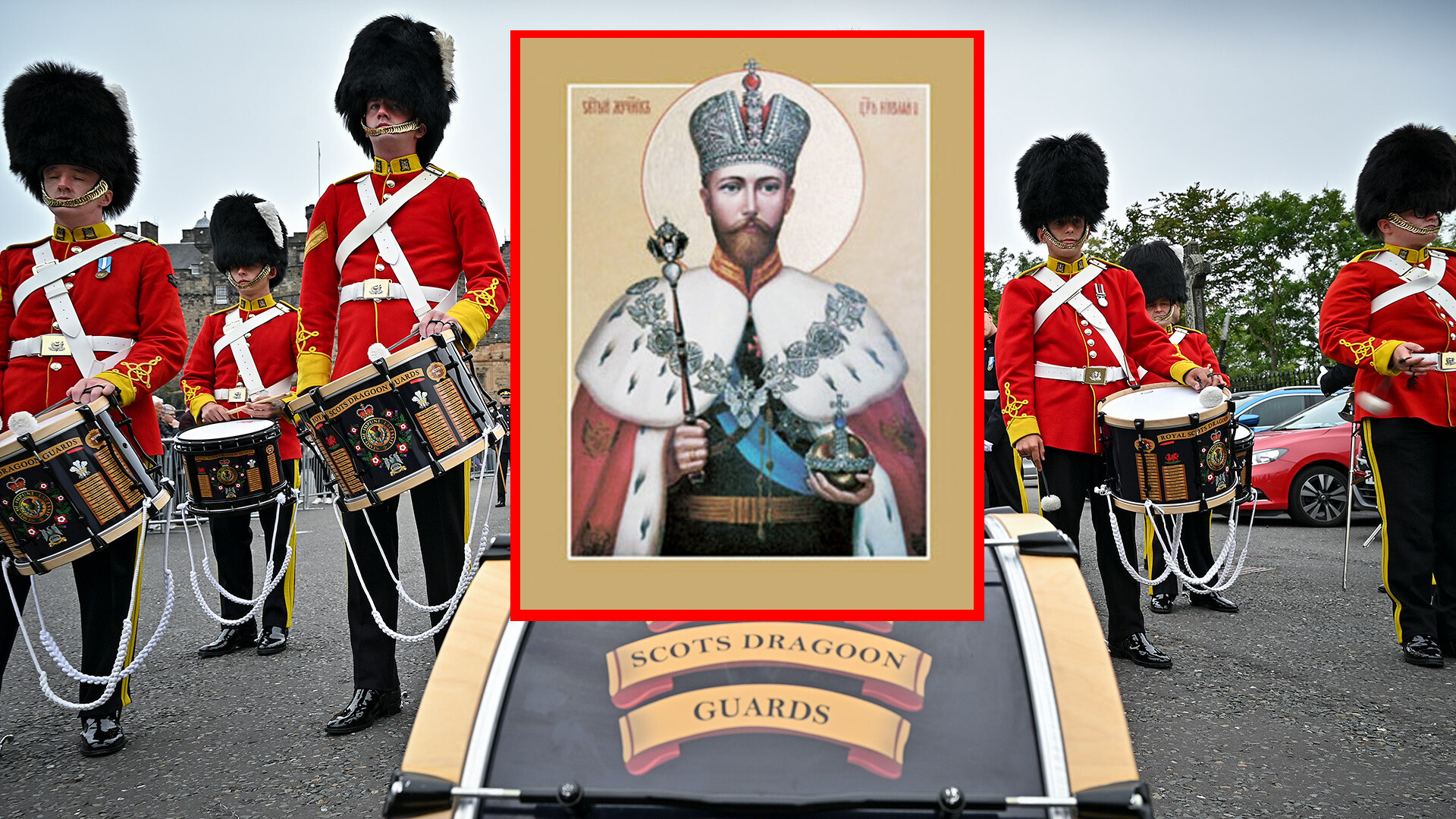
Russian Emperor Nicholas II is not a meaningless figure to the Royal Scottish Dragoons. An icon depicting the monarch canonized in 2000 hangs in the regiment headquarters in Edinburgh and accompanies it during military operations, while the band of this military unit plays the anthem of the Russian Empire, ‘God Save the Tsar!’, at ceremonial events.
So, what is the connection between the Russian tsar and the elite British soldiers?
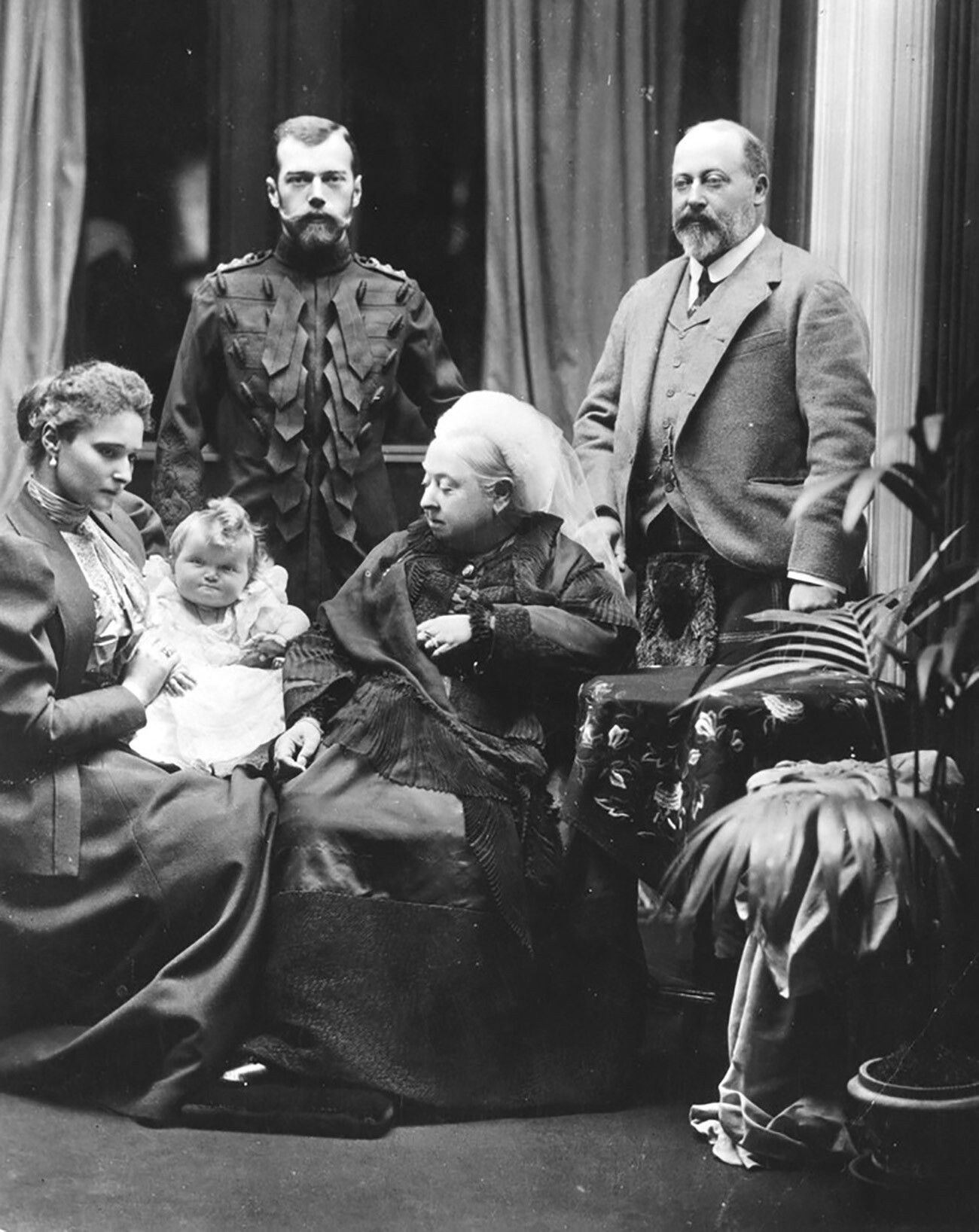
Nicholas II, his consort Alexandra Feodorovna and his eldest daughter Grand Duchess Olga Nikolaevna visit Queen Victoria at Balmoral, 1896.
Public domainThe Royal Scottish Dragoon Guards Regiment is, indeed, the elite of the Armed Forces of the country. It was formed in 1971 by combining the 3rd Carabinieri Guards Regiment (Prince of Wales Dragoon Guards) and the 2nd Dragoon Regiment (the so-called ‘Royal Scots Greys’).
Both military formations have a long history (since the 17th century) and many glorious victories are credited to them, but it is the ‘Greys’ that have a special bond with Russia.

Tsar Nicholas II.
Public DomainIn 1894, Queen Victoria, in honor of the engagement of Tsesarevich Nicholas Alexandrovich (future Emperor Nicholas II) with her favorite granddaughter, Princess Alice of Hesse (future Empress Alexandra Feodorovna), appointed him to the honorary post of Chief Colonel of the 2nd Dragoon Regiment.
There was nothing unusual in such a practice then. Thus, at the very same time, Prince of Wales ( future King Edward VII) became chief of the Kiev 9th Hussar Regiment.
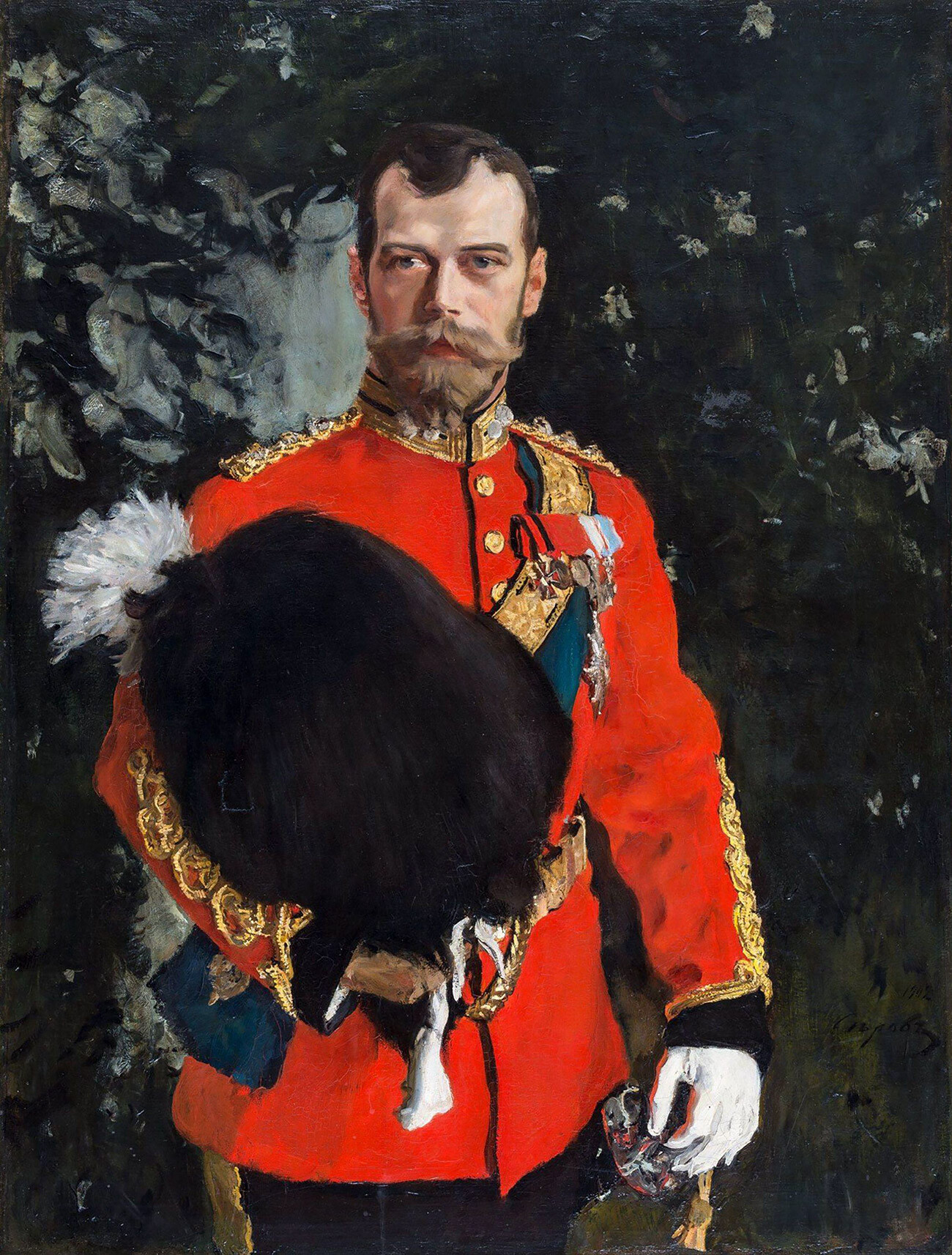
Portrait of Nicholas II by Valentin Serov.
Legion MediaOn November 19, 1894, in St. Petersburg, in the presence of the Prince and Princess of Wales, Nicholas, who had already become tsar, accepted the honorary patronage over the regiment and, two years later, Lieutenant Colonel Alfred Welby officially represented the Dragoons at his coronation.
In 1896, Emperor Nicholas II made his first foreign visit after his coronation to Great Britain. For a meeting with Queen Victoria at Balmoral Castle in Scotland, he arrived in the red uniform of the Royal Scots Greys and it was these soldiers who accompanied him on his journey through the country.
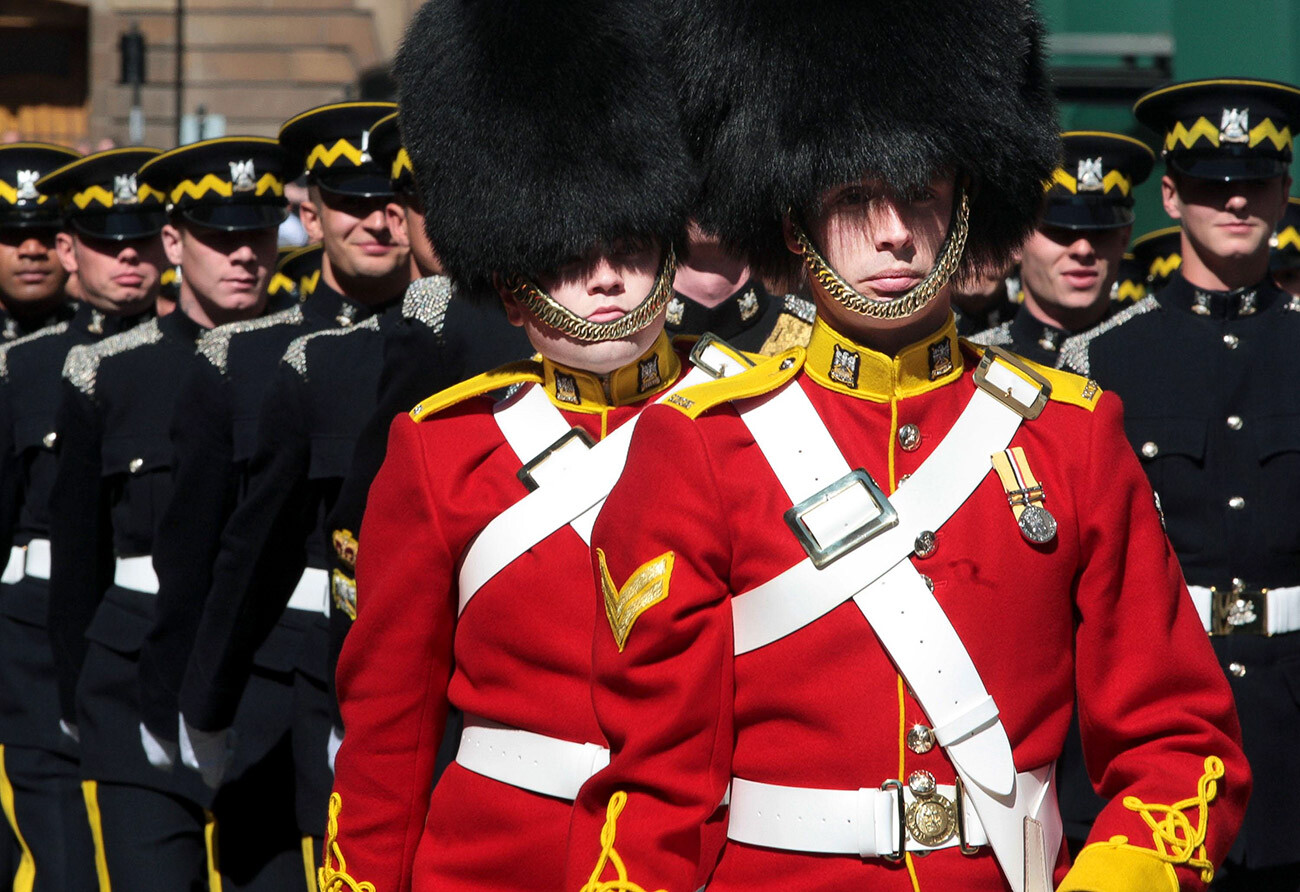
Royal Scots Dragoon Guards Parade In Glasgow
Legion MediaIn 1902, Nicholas II commissioned his portrait in the uniform of a colonel of the Dragoon Regiment from famous Russian artist Valentin Serov and presented it to his charges. Today, it is in the Royal Scots Greys Museum at Edinburgh Castle.
The murder of Tsar Nicholas II in 1918 came as a shock to the Scottish Dragoons. As a sign of mourning for his martyrdom, they still wear a black flap under their berets.
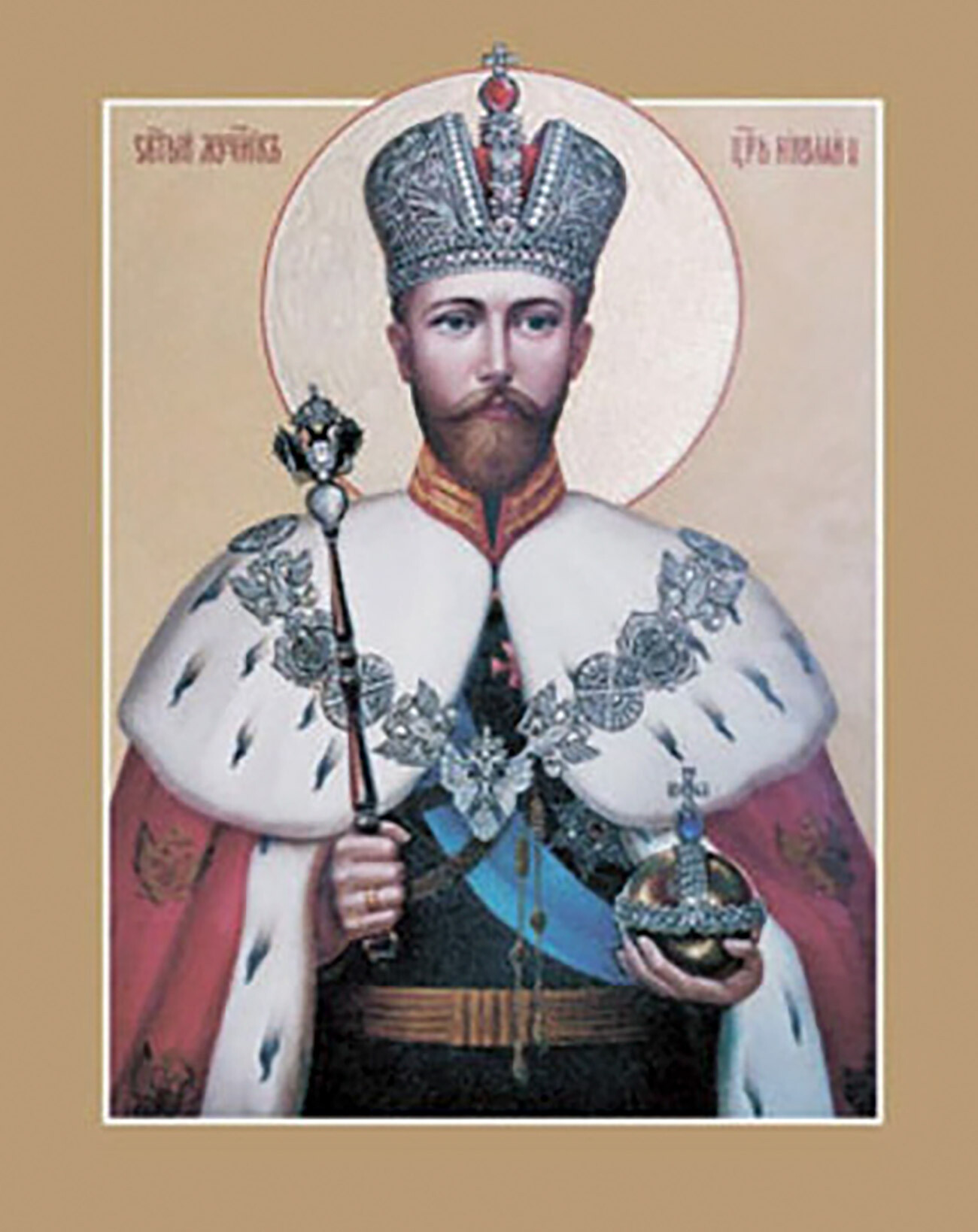
St. Nicholas the Tsar icon.
Public DomainIn 1998, representatives of the regiment attended the reburial of the remains of the royal family at the Peter and Paul Fortress in St. Petersburg and, three years later, representatives of the Moscow Caledonian Club (a public organization that promotes the historical and cultural heritage of Scotland and Russia) gave the Dragoons the same icon depicting Nicholas II, with which they are no longer parted.
The ‘Greys’ are convinced that it was through the intercession of their heavenly guardian angel that they were able to avoid almost no casualties in the armed conflicts that followed.
If using any of Russia Beyond's content, partly or in full, always provide an active hyperlink to the original material.
Subscribe
to our newsletter!
Get the week's best stories straight to your inbox